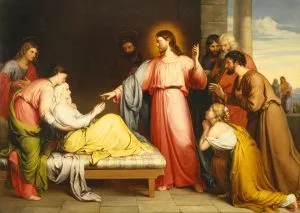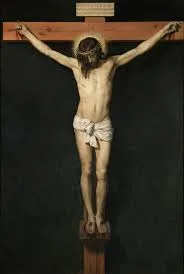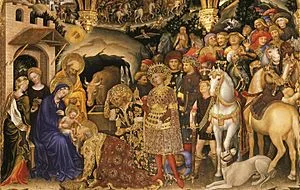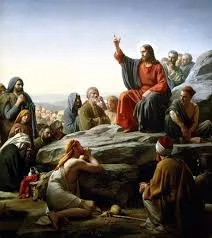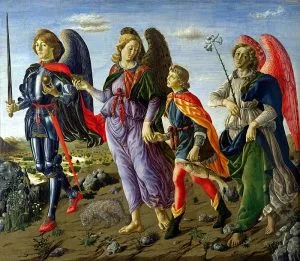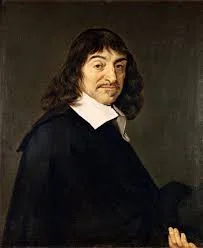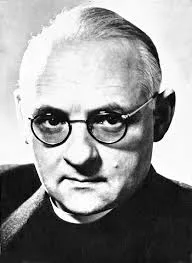Among its many hidden powers, the Zeitgeist has the capacity to hypnotize us. So desirous are we to placate it, that we often allow our thinking to get sloppy. It is in this vein that Pope Pius XII cautioned the Faithful to avoid “indulging in a false irenism” that is quick to conciliate with the Evolutionary Zeigeist of our age especially related to the origins of Man. This effort usually ends up “over-mytholigizing” the Genesis account and treating it entirely as symbolic. In so doing they run the risk of placing more faith in science than in Revelation, stretching the limits of credibility in order to make the creation account fit with evolutionary speculation. Of course the problem with doing this is that it ultimately is damaging to true faith and thus needs to be pointed out when we see it.
Once Pope Pius XII took polygenism off the table in his Encyclical Humani Generis, Catholics still scrambled to make Adam a product of a mixture of evolution and direct creation. Genesis proclaims that Adam was created when the “LORD God formed man of dust from the ground, and breathed into his nostrils the breath of life; and man became a living being “(Gn 2:7). They attempt to read this as God taking the body of a humanoid and then infusing a human soul into it in order to create Adam. It seems like a clever way to reconcile Evolution and Revelation, especially because there is nothing in the text that explicitly rules out reading “dust from the ground” as organic living material.
It is clever until we actually try to explain the change using philosophical categories. The proposed change consists of God placing a new form into the secondary matter that is the body of the humanoid. The body itself does not change, but only the form (the human soul) changes.
Philosophical Categories
In describing change, it is first necessary to state an important principle. When we speak of change we must always recall that there is must always be a principle of unity that is there both before and after the change. Otherwise we cannot say what changed. You cannot have change without a subject that undergoes the change.
Identifying the principle of unity depends upon what kind of change we are describing of which there are two possibilities—accidental and substantial change. With an accidental change, the change is within the thing itself. Something changes about the thing, but the thing itself does not change. A substantial change on the other hand is the change from one thing into another. One substance becomes another substance. As an illustration we could look at a glass of water. Adding food dye to it would be an accidental change while doing electrolysis on it would bring about a substantial change into hydrogen and oxygen.
In describing the infusion of the human soul in philosophical terms, I described God’s action as placing a new form into the secondary matter that is the humanoid’s body. In order to understand this change, we need to further define what we mean by “secondary matter”.

All things that exist are composed of form and matter. This idea is commonly referred to as hylemorphism. Put simply, the matter can potentially be anything, but the form determines what particular shape the matter will take currently. This potentiality to be anything is called primary matter while the matter as it currently is informed is secondary matter. Matter has the potential to be arranged in any way long term, but how it will be arranged in the short term is dependent upon how it is currently informed. From this we can conclude that because the form determines what a thing is, it therefore ontologically precedes matter. Adding this to what was said about change above, we can describe an accidental change as having its principle of unity in the form while the principle of unity in a substantial change is the primary matter.
An Explanation to Our Problem
Let us now set out to describe the proposed explanation in terms of the categories of change. In truth Evolution describes all changes as accidental changes, as merely changes in degrees instead of changes in kind. But the theistic explanation requires that the change be one that is substantial. The introduction of a new form is always a substantial change.
In a substantial change the form draws to itself the matter and arranges it such that it “fits”. The problem with this explanation though is that the specific humanoid’s body was arranged in the way it was (e.g. it was a humanoid’s body) precisely because it had the form of humanoid. If you were to swap out that form, the matter would not be arranged that way. It could be that the primary matter was drawn from the secondary matter in that body but it would not be arranged in the same way. Furthermore, the separation of the form of the humanoid from its matter means that it would have died and thus Adam’s soul would have been united to a dead body. In short you can’t really say in any meaningful way that Adam would have been created out of the same body. In fact it is just as accurate to say that the body was formed from the dust of the earth as Genesis does.
To be clear you also could not say it was the same individual that had somehow been elevated with gifts of reason and free will. To say that would be to fall back into thinking it is an accidental change. It must be a substantial change to accommodate the introduction of the new form. Given that substantial change doesn’t work like this, we have to conclude that the explanation is metaphysically impossible.
A Miraculous Explanation?
This doesn’t entirely exhaust the possible ways in which something might change, especially if we make room for a miraculous intervention. Catholics observe a miraculous change each time they attend Mass. In Transubstantiation, the entire substance of the bread and wine are changed into the Body and Blood of Christ with the accidents remaining the same. We might say that a new form is introduced while the physical matter does not change.
It is along these same lines that the irenic evolutionist is proposing that the physical body doesn’t change even if a new form is introduced. The problem with this explanation is that it would have to treat the body as an accident of the human person and not part of its substantial whole. If the soul can simply be inserted into any body then the body itself is an accident. This would strike at the truths closely related to both Christian anthropology as well as at the Incarnation.
In conclusion then there is no way to reconcile Revelation and Evolution when it comes to the origin of Adam’s body directly. As soon as we try to build the necessary bridge using Philosophy we are left without anything to build upon because we are unable to describe the change in any of our categories of change. Until a better scientific explanation for how Adam became a man comes along, it is better to yield to the Heiliggeist than the Zeitgeist.
